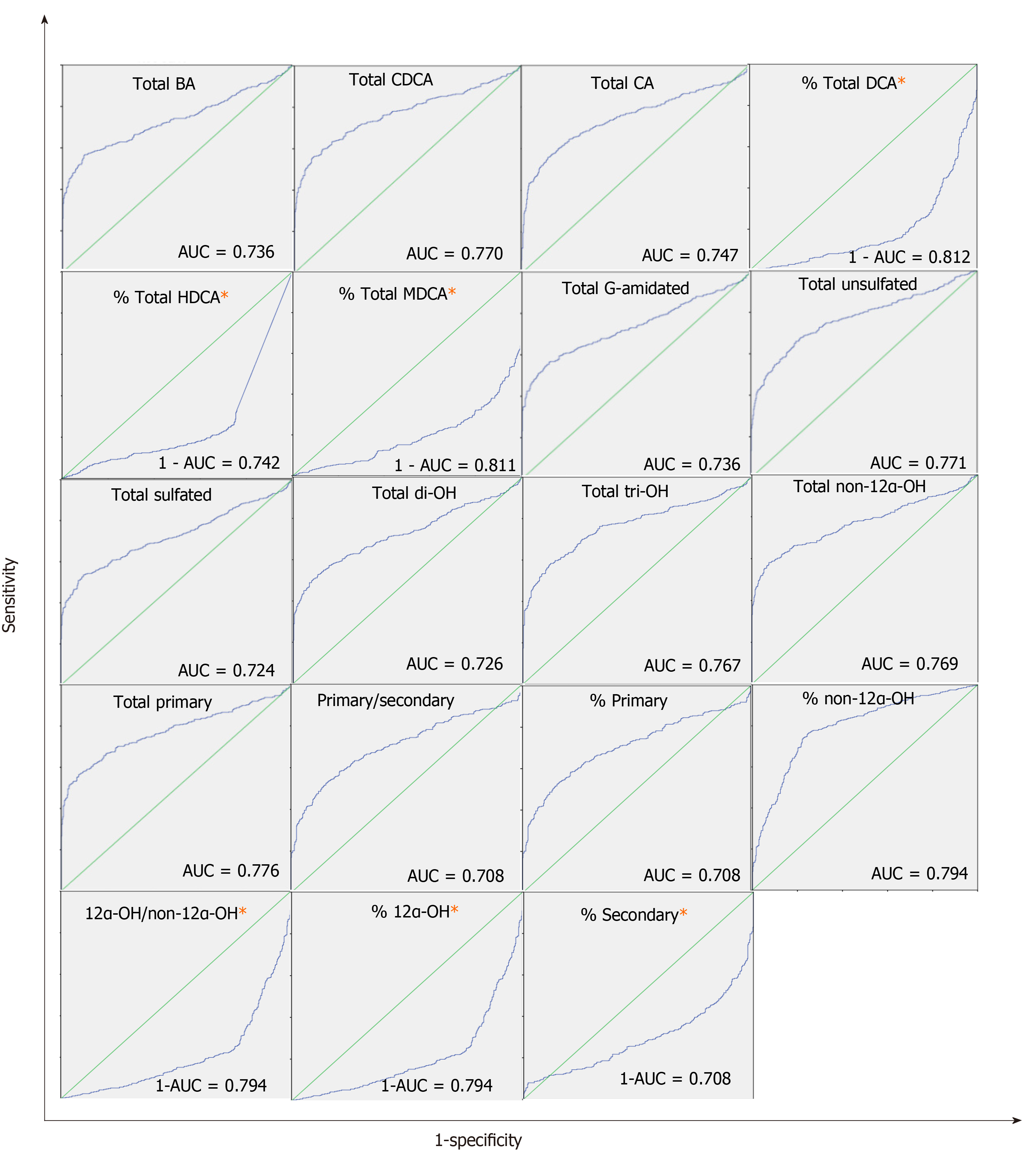Copyright
©The Author(s) 2021.
World J Hepatol. Apr 27, 2021; 13(4): 433-455
Published online Apr 27, 2021. doi: 10.4254/wjh.v13.i4.433
Published online Apr 27, 2021. doi: 10.4254/wjh.v13.i4.433
Figure 1 Receiver operating characteristics curves of bile acids concentrations and indices with area under the receiver operating characteristics curve > 0.
7. The area under the receiver operating characteristics curve (AUC) for differentiating patients from healthy controls. The scale of both the Y-axis (sensitivity) and the X-axis (1-specificity) is 0-1. Bile acids (BA) indices are higher in patients vs. controls, and the positive actual state was patients except the ones annotated with “*”, where BA indices were lower in patients compared to controls. For these BA indices, “1-AUC” instead of “AUC” was calculated. AUC: Area under the receiver operating characteristics curve; BA: Bile acids; CDCA: Chenodeoxycholic acid; CA: Cholic acid; DCA: Deoxycholic acid; HDCA: Hyodeoxycholic acid; MDCA: Murideoxycholic acid; G: Glycine.
- Citation: Alamoudi JA, Li W, Gautam N, Olivera M, Meza J, Mukherjee S, Alnouti Y. Bile acid indices as biomarkers for liver diseases I: Diagnostic markers. World J Hepatol 2021; 13(4): 433-455
- URL: https://www.wjgnet.com/1948-5182/full/v13/i4/433.htm
- DOI: https://dx.doi.org/10.4254/wjh.v13.i4.433









